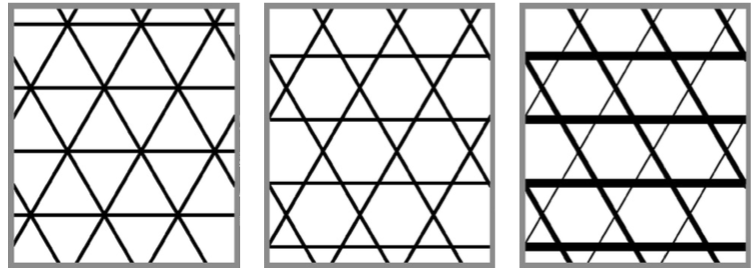Low Weight Structures
The homogenization method links macroscopic optimal design problems to optimal microstructures. In the case of the minimum compliance problem, for instance, it is known that optimal designs involve locally optimal multi-layered laminated composites. In some cases, it is even known that optimal microstructures require multiple scales. In two dimensions, it is known that when the volume fraction of material converges to zero, the properties of these laminates converge to that of the well-known Michell truss structures, but that this is not true in three dimensions. In collaboration with R.V.~Kohn, I studied the problem of optimal low weight microstructures. We devised a simple class of microstructures, the Single Scale Laminates, made of arrays of beams in 2D and walls in 3D. These structures are extremal in the sense that no stiffer structure is possible using the same total mass. They are also universal in the sense that given any Hooke’s law there exists a single-scale laminate of the same weight that is stiffer. We proved a superposition theorem showing that at first order in the volume fraction, the Hooke’s law of a Single Scale Laminate is simply the sum of the Hooke’s law of its layers. Using Single Scale Laminates, the problem of finding the microstructure of minimum weight with a given stiffness becomes a simple semi-definite optimization problem (Bourdin & Kohn, 2008).

In 2D, a triangular lattice (left) and a Kagomé lattice (center) are both examples of single-scale laminates; since they have the same layer directions and thicknesses, the Superposition Principle shows they have the same Hooke’s law. For a general single-scale laminate, the thicknesses of the layers can depend on their orientation; thus the structure shown on the right is also a 2D single-scale laminate.
References
- Bourdin, B., & Kohn, R. V. (2008). Optimization of Structural Topology in the High-Porosity Regime. J. Mech. Phys. Solids, 56, 1043–1064. DOI:10.1016/j.jmps.2007.06.002 Download
RESEARCH
optimaldesign
